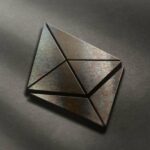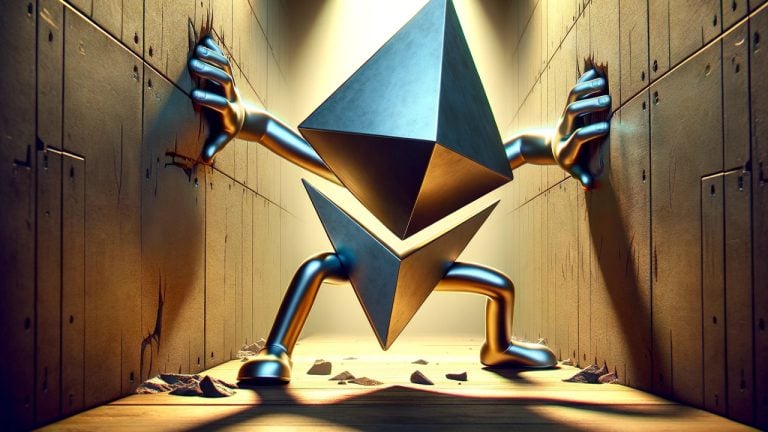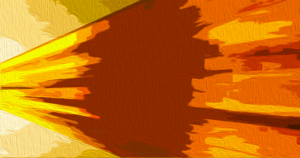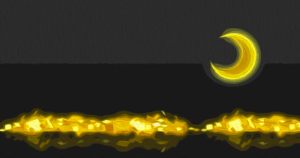
Ethereum's Price and Market Capitalization
As of December 15, 2023, the price of Ethereum (ETH) is $2,259. It is important to note that Ethereum holds a significant market capitalization of $271 billion, along with a 24-hour trade volume of approximately $17.54 billion. These figures highlight the substantial presence of Ethereum in the cryptocurrency economy compared to other tokens. However, the fluctuating trade volumes and price range ($2,254 to $2,331) within the last 24 hours indicate that the market is grappling with varied investor sentiments and external factors.
Analysis of Ethereum's Price Momentum
At the time of writing, Ethereum's relative strength index (RSI) is at 42.9, Stochastic at 17.9, and the commodity channel index (CCI) at -108.5. These indicators suggest a lack of strong momentum in either direction for Ethereum's price, indicating a period of uncertainty or consolidation within the market.
Moving Averages Analysis
A detailed look at the moving averages reveals a predominantly bearish sentiment. The exponential moving averages (EMAs) and simple moving averages (SMAs) for 10, 20, 30, 50, and 100 days primarily signal a negative tone, except for the 100-day SMA and 200-day EMA, which indicate some positivity. This mixed outlook hints at a complex market environment, where short-term bearish trends are contrasted with potential long-term stability or growth.
Daily and 4-Hour Chart Analysis
The daily ETH/USD chart showcases a recent high at approximately $2,407 and a significant low at around $1,929. The alternating lows and highs reflect market indecision or consolidation. The latest drop on the daily chart points to bearish sentiment, but without further context, it is challenging to ascertain if this marks a reversal or a mere pullback.
The 4-hour ETH/USD chart offers a more granular view, with a recent high near $2,335 and a low at about $2,146. The prevalence of volatility and lower highs suggests a short-term downtrend. However, the inconsistent volume patterns provide no clear indication of a trend reversal or continuation, adding to the complexity of the current market scenario.
Bullish Outlook for Ethereum
Despite the complex and somewhat uncertain market environment, several indicators provide a cautiously optimistic outlook for Ethereum. The notable bullish signals from the 100-day SMA and 200-day EMA suggest underlying strength and potential for long-term growth. Additionally, Ethereum's substantial market capitalization and robust trade volumes indicate continued investor interest and market confidence.
Bearish Outlook for Ethereum
On the flip side, the predominance of negative signals across most short-term moving averages, combined with the neutral to bearish positions of the RSI, Stochastic, and CCI, paints a more cautious picture for Ethereum's immediate future. The recent trend of lower highs and the dominance of red candles in the 4-hour ETH/USD chart suggest a continuing downtrend. This bearish sentiment is further compounded by the market's current volatility and indecision, as evidenced by the fluctuating trade volumes and price ranges.
To stay updated with weekly price analysis, register your email here:
What are your thoughts on Ethereum's market action on Friday morning? Share your opinions in the comments section below.
Frequently Asked Questions
What precious metals are allowed in IRA?
Gold is the most popular precious metal for IRA accounts. Also available as investments are bars and bullion gold coins.
Precious and precious metals are considered safe investments, as they don’t lose their value over the course of time. They're also considered a great way to diversify an investment portfolio.
Precious metals are silver, palladium, and platinum. These metals share similar properties. Each one has its own uses.
For instance, platinum can be used in jewelry manufacturing. You can create catalysts with palladium. To produce coins, silver can be used.
Consider how much you plan to spend on gold when deciding on which precious metal to buy. It might be cheaper to buy gold at a lower price per ounce.
You should also think about whether you want to keep your investment private. If you do, you should choose palladium.
Palladium is worth more than gold. However, it is also rarer. So you'll likely have to pay more for it.
Their storage fees are another important factor to consider when choosing between sterling and gold. The weight of gold is what you store. If you have larger amounts of gold to store, you will be charged more.
Silver can be stored by volume. So you'll pay less for storing smaller amounts of silver.
If you decide to store your precious metals in an IRA, follow all IRS rules regarding gold and silver. You must keep track of all transactions and report them to the IRS.
What is a Precious Metal IRA and How Can You Benefit From It?
Precious metals are an excellent investment for retirement accounts. They have held their value since biblical times. A great way to diversify and protect your portfolio is to invest in precious metals such silver, gold, and platinum.
Certain countries even allow their citizens to save money in foreign currencies. You can buy Canadian gold bars and keep them at home. You can then sell the same gold bars to Canadian dollars when you return home to visit your family.
This is a great way to invest in precious metals. It's especially useful for anyone who lives outside North America.
How much money can a gold IRA earn?
Yes, but not as often as you think. It depends on how much you're willing to risk. If you are comfortable investing $10,000 annually for 20 years, you could potentially have $1 million at retirement age. You'll end up losing everything if you place all your eggs in the same basket.
Diversifying your investments is important. Inflation is a problem for gold. It is important to invest in assets that increase with inflation. Stocks are able to do this because they rise as companies make more profit. This is also true for bonds. They pay interest each and every year. They are great in times of economic growth.
What happens when inflation is absent? In deflationary periods stocks and bonds both fall in value. Investors should refrain from putting all their savings into one type of investment such as a mutual fund or bond.
Instead, they should invest in a mix of different funds. They could invest in stocks or bonds. Or they could invest in both cash and bonds.
By doing so, they are exposed to both the positive and negative sides of the coin. Inflation and deflation. They will still see a return in time.
What proportion of your portfolio should you have in precious metals
Protect yourself against inflation by investing in physical gold. This is because you not only get the current price but also the future value when you invest precious metals. As prices rise, so does your investment's value.
Tax benefits will accrue if your investments are kept for at most five years. If you decide to sell your investments after that period, you will be subject to capital gains tax. Our website has more information about how to purchase gold coins.
Statistics
- Depending on your financial situation, most experts recommend you invest no more than 5% to 10% of your retirement funds in precious metals. (forbes.com)
- You can only purchase gold bars of at least 99.5% purity. (forbes.com)
- To qualify as IRA allowable precious metals and be accepted by STRATA, the following minimum fineness requirements must be met: Gold must be 99.5% pure, silver must be 99.9% pure, and platinum and palladium must both be 99.95% pure. (stratatrust.com)
- Silver must be 99.9% pure • (forbes.com)
External Links
investopedia.com
wsj.com
kitco.com
forbes.com
- Gold IRA: Add Some Sparkle To Your Retirement Nest Egg
- Understanding China's Evergrande Crisis – Forbes Advisor
How To
Precious Metals that have been approved by the IRA
IRA-approved precious metallics are great investments, whether you want to save for retirement and invest in your next venture. Diversifying your portfolio can protect you from inflation with a variety of options, including silver coins and gold bars.
Two main types of investment products in precious metals are available. Bars and coins, which are physical bullion products, can be considered tangible assets as they are in tangible form. Exchange-traded Funds (ETFs), however, are financial instruments that track and report the price movements in an underlying asset. ETFs can track the movement of gold or other metals. ETFs are traded like stocks on stock markets, so investors can purchase shares directly from the company issuing them.
There are many precious metals to choose from. Silver and gold are commonly used for jewellery making and decoration. However, platinum and palladium tend to be associated with luxury goods. Palladium holds its value better than that of platinum which makes it ideal to be used in industrial applications. Although silver is useful for industrial purposes it is preferred for decorative uses.
Because of the costs involved in mining and refining raw material, physical bullion products can be more costly. These products are generally safer and more secure than paper currencies. For example, consumers may lose confidence in the currency and look for alternatives when the U.S. dollar loses purchasing power. Contrary to this, physical bullion does not rely on trust among countries or between companies. Instead, they are backed up by central banks and governments giving customers peace-of-mind.
The supply and demand for gold affect the price of gold. In other words, demand drives the price up. However, supply is greater than demand and prices fall. Investors can profit from fluctuating gold prices by taking advantage of this dynamic. These fluctuations are good for investors who have physical bullion products as they get a better return on their investment.
Contrary to traditional investments, precious metals can not be affected by economic recessions and interest rate changes. As long as the demand for gold remains strong, it will continue to rise. Because of this, precious metals are considered safe havens during times of uncertainty.
The most well-known precious metals are:
- Gold – Gold is the oldest precious metal. Gold is also called “yellow-metal”. Although gold is a common household name, it is a very rare element found naturally underground. Most of the gold reserves in the world are located in South Africa.
- Silver – Silver is second most valuable precious metal, after gold. Silver, like gold, is extracted from natural deposits. However, silver is more commonly extracted from ore than from rock formations. Because of its durability and malleability, as well as resistance to tarnishing, silver is widely used in commerce and industry. Over 98% of global silver production is produced in the United States.
- Platinum – The third most precious precious metal is platinum. It is used in many industries, such as fuel cells, catalytic converters and high-end medical equipment. You can also use platinum in dentistry to make dental crowns and bridges.
- Palladium: Palladium is the 4th most valuable precious metallic. Its popularity is growing rapidly among manufacturers because of its strength and stability. You can also use palladium in electronics, automotives, and military technology.
- Rhodium – Rhodium has been ranked fifth among precious metals. Rhodium is a rare metal, but it is highly sought-after because of its use as a catalyst for automobile engines.
- Ruthenium – Ruthenium is the sixth most valuable precious metal. While palladium and platinum are scarce, ruthenium has a large supply. It is used for steel manufacturing, chemical manufacturing, and aircraft engines.
- Iridium – Iridium is the seventh-most valuable precious metal. Iridium is an important component in satellite technology. It is used in the construction of orbiting satellites that transmit TV signals and telephone calls.
- Osmium- Osmium ranks eighth in the list of most valuable precious metals. Osmium can withstand extreme temperatures and is commonly used in nuclear reactors. It is also used in cutting tools, jewelry, and medicine.
- Rhenium – Rhenium is the 9th most valuable precious metal. Rhenium can also be used in rocketry, oil refinement, and semiconductor manufacturing.
- Iodine- Iodine ranks as the tenth most precious precious metal. Iodine is used for photography, radiography and pharmaceuticals.
—————————————————————————————————————————————————————————————-
Based on [POSTTITLE]
by [POSTAUTHOR]
Related posts:
 7 Best Gold IRA Companies 2023 (Ranked by customer reviews)
7 Best Gold IRA Companies 2023 (Ranked by customer reviews)
 Ethereum Technical Analysis: ETH Hangs Above $2K Range Amid 3% Drop
Ethereum Technical Analysis: ETH Hangs Above $2K Range Amid 3% Drop
 Ethereum Price Analysis: Strong Bullish Trend Signals Potential for Further Price Appreciation
Ethereum Price Analysis: Strong Bullish Trend Signals Potential for Further Price Appreciation
 Ethereum Technical Analysis: ETH Gains Momentum, Approaches $2,100 Resistance
Ethereum Technical Analysis: ETH Gains Momentum, Approaches $2,100 Resistance













